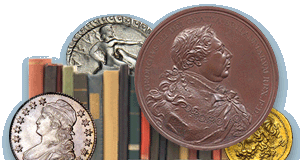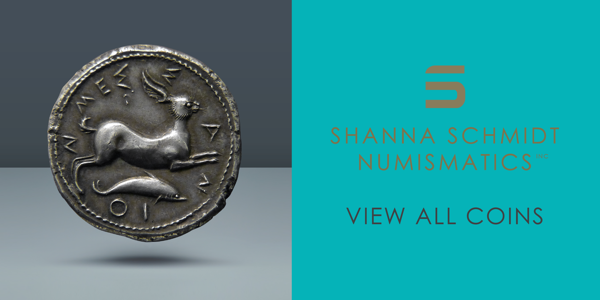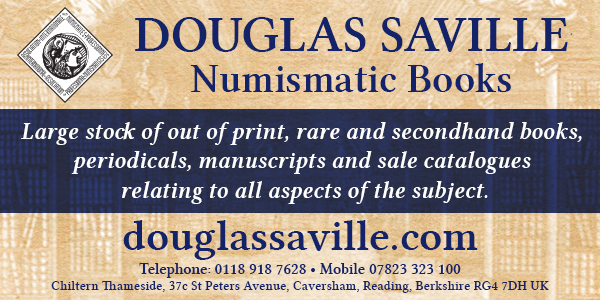
PREV ARTICLE
NEXT ARTICLE
FULL ISSUE
PREV FULL ISSUE
NOTES FROM E-SYLUM READERS: OCTOBER 19, 2025
More on Carl Schwenker "The "Video: Looking at a Dollar Bill" brought back memories of Carl Schwenker who passed away in 2024. Carl's greatest numismatic feat was his complete set of Deep Mirror Proof-like Morgan dollars. He shared these in show and tells and presentations at the Greater Houston Coin Club's meetings. Arguably the top set in the nation, he eventually sold it to become part of the Del Loy Hansen collection! So it's a bit ironic to watch him teach about the paper dollar. But he truly cared for our late president Francis Townsend. "Francis turned around a declining club. And he asked Carl to turn around a declining Houston Money Show. For ten years Carl was the driving force in that very successful effort. Today the show funds a wide range of educational activities including multiple full scholarships to the ANA Summer Seminar each year. And the club is still growing. "After Francis' passing, GHCC began recognizing members for major contributions to the club and numismatics with its top award. It's named the Francis Townsend Service Award. Carl and his wife Pat are past winners. That really made Carl happy." Thanks for the additional information on Carl, his collection and service to the hobby. -Editor
To read the earlier E-Sylum article, see:
Justin's Stamping Stampede "The last E-Sylum addressed the "Trump Lives Here" stamp on $20 bills and the Where's George stamp. "I have been marking $20s since earlier this year when I acquired one of the "Trump Lives Here" stamps. So far no one I have spent one with has made any comment upon receiving it. I am not tracking how many I have stamped and spent, but I estimate several hundred at this point. "As for the Where's George bills, I've been stamping those since 1999. Not just singles either, but $2, $100 bills, and everything in between. My account summarizes that I've since entered a total of 3,150 bills comprising a face value of $20,642. "I love the stats they provide. Here is a screenshot of the most interesting data summary." Steadfast work! -Editor
To read the earlier E-Sylum article, see:
Half Cent Headline Haze Bill Eckberg writes: "An ad showing the cover of Red Book Quarterly featuring an article entitled "Engraving a Nation: How Robert Scot"s Draped Bust Design Defined America"s Coinage" got my attention. Do we have a new analysis of Scot"s effect on subsequent coinage? I had published the cover article in the July, 2022 issue of The Numismatist entitled "The Artistry of Robert Scot." Was their article derived from mine? Or did it present new and/or better information than mine? I had to know, so I purchased a copy. If ever there was a numismatic article that had a misleading title, this was it. The article, with minor background information, proved to be a description of the Red Book varieties of Draped Bust half cents. Nothing whatsoever about any influence Scot might have had on other U.S. coinage. That some of the information wasn"t even correct would be common knowledge to most students of early U.S. coins. Scot did not design or engrave the 1793 half cents; he wasn"t even on the payroll until after they were made. He also didn"t create the Draped Bust design in 1800. He created it in 1795 for the dollar; in 1796 it was used on all of the other silver coins and the cent. The half cent was the last series to feature the design. To give credit where it is due, the cover photo of an 1805/stemless coin in UNC is quite lovely. So, I propose an award to Greysheet for publishing an article with the most misleading title in the history of numismatics."
To read the complete article, see:
Numismatic Scrapbook Magazine 1955-1956 Wanted "I am looking for myself for a complete set of Numismatic Scrapbook Magazine for 1955 and 1956. I started with a copy of the August 1955 issue. I was at summer camp and Murry Gould gave my father a copy to give to me. At the end of the summer it was threadbare but I loved it. So I want to buy a whole set for 1955 and 1956. Bound or unbound but I want them to bring back memories. Anything readers can do to help will be greatly appreciated." In 2023 Greg Bennick interviewed Richard, who is originally from the Boston area, and recounted his start in numismatics in the first interview, linked below. Can anyone help? Great reason to acquire the issues! -Editor
To read the earlier E-Sylum article, see:
Query: Baron Von Steuben Medals "I recently acquired two Baron Von Steuben medals, but have been unable to find out anything about them. They are 1.5" in diameter. The dates on the reverse of the upper one (a very yellow bronze?) was associated with the bicentennial. The lower (enface) is bronze. If anybody has information about either, I"d appreciate knowing more about them." Can anyone help? -Editor
Videos: Aluminum Patterns, 1804 Dollar Provenances Here are two new PCNS videos that may be of interest to E-Sylum readers. The two parts are related, recommended to watch part 1 followed by part 2. Part 1: The Paradigm in Aluminum Patterns by PCNS member Douglas Ward Part 2:Provenances of the 1804 dollar by PCNS member Douglas Ward Thanks. Here they are. -Editor
Aluminum is a fascinating metal. In its natural, compound forms (e.g., alum and bauxite), it"s been known for centuries. However, it"s only been about 140 years that refined pure aluminum has been widely available for use. At first it was more expensive than gold or silver due to the difficulty in refining the ore. Advances in the smelting process have made it much less expensive. Aluminum has been a candidate for U.S. coinage several times, most notably in the 1860s and 1870s, when it was considerably more valuable than today.
Doug elucidates some of the history behind the famous US 1804 dollar.
For more information on the Pacific Coast Numismatic Society, see:
Semiquincentennial $2.50 Coins Proposed Vic Mason submitted these ideas for the 2026 semiquincentennial. Thanks. -Editor Editor Larry Jewett"s piece in the 20 October 2025 edition of Coin World discusses bipartisan legislation recently submitted in the United States Congress for the United States Mint to produce two $2.50 coins next year to commemorate America"s 250th birthday. Apparently, the designs of both coins would be the same as those issued in 1926 to celebrate our 150th birthday: a female figure on the obverse symbolizing Lady Liberty and, to quote the Red Book, "holding in one hand a scroll representing the Declaration of Independence, and in the other the Torch of Freedom." The reverse displays "a representation of Independence Hall in Philadelphia." The two 1926 issues were circulating coins: a silver half dollar and a $2.50 gold quarter eagle. It"s ironic that neither of the proposed 2026 coins can enter circulation in those two precious metals – the only forms of "money" mentioned in the US constitution – and must be produced in base metals, because of the soaring market prices of silver and gold. Is it lack of imagination that leads to designs that copy those of a century ago? Or are we saving on production costs by not hiring designers for a new obverse and reverse? Instead, why not use the same designs for the coins as were used by Washington and Hamilton in the 1790s? We could issue three coins dated, on the front, 1796-2026: (1) a half dollar produced in base metals for circulation; (2) a silver dollar for collectors; and, also for collectors, (3) a tenth-ounce quarter eagle for $2.50 – with all denominations inscribed on their reverses. Both small-eagle and heraldic-eagle designs could be employed on the coins.
Wayne Homren, Editor The Numismatic Bibliomania Society is a non-profit organization promoting numismatic literature. See our web site at coinbooks.org. To submit items for publication in The E-Sylum, write to the Editor at this address: whomren@gmail.com To subscribe go to: Subscribe All Rights Reserved. NBS Home Page Contact the NBS webmaster 
|





